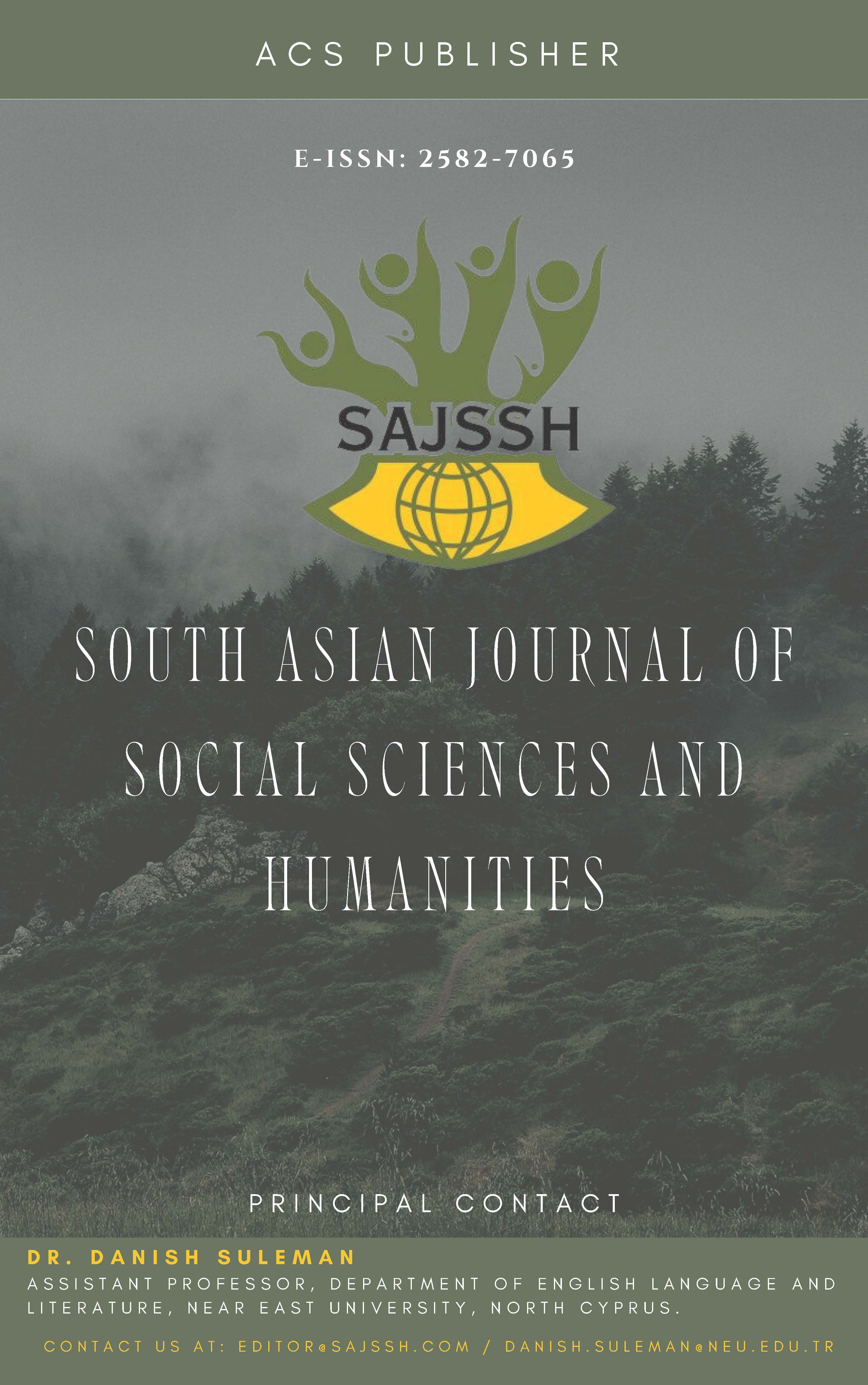The Effect of Liquidity Ratio on the Company Financial Performance: Evidence from a Developing Economy
DOI:
https://doi.org/10.48165/sajssh.2024.6413Keywords:
liquidity, company financial performance, developing economyAbstract
This study purposes to analyze the link between liquidity ratios and the company financial performance of companies in developing economy. It used secondary data from 118 companies from 2020 to 2024 by using Stata data analysis software. The study found a important and positive association between liquidity ratios and company financial performance. The connection is of great significance to financial managers, investors, and policymakers, particularly in environments in the economy characterized by instability and financial variability. It was found that firms that hold moderate liquidity lacking investing professionally may smart from a lower return on investment, representative that unnecessary liquidity can be main to ineffective utilization of capital. The study suggests that firms keep a suitable balance in liquidity ratios, enough to cover short-term requests without disrupting utilization of existing funds for productive investments. Firms should grow continuing logical models to display liquidity depending on variations in the global and local economic environment to confirm high financial flexibility. The findings of this paper help financial managers make the best decisions concerning the best liquidity ratio, which balances financial safety and investment in profitable changes. Good liquidity administration increases company financial performance by decreasing financing expenses or avoiding liquidity issues.
References
Abbas, Y. A., Mehmood, W., Lazim, Y. Y., & Aman-Ullah, A. (2022). Sustainability reporting and corporate reputation of Malaysian IPO companies. Environmental Science and Pollution Research, 29(52), 78726–78738.
Abbas, Y. A., Sabti, Y. M., Al-Jazaeri, M. B. M., & Abu Khadher, H. A. H. (2023). Product quality and corporate financial performance of Bursa Malaysia. South Asian Journal of Social Science and Humanities, 4(1), 177–188.
Abdullah, Y., Ahmad-Zaluki, N. A., & Abd Rahim, N. (2019). Corporate social responsibility (CSR) disclosure and its dimensions in Non-Asian and Asian Countries: A literature review.
Ajanthan, A. (2013). A nexus between liquidity & profitability: A study of trading companies in Sri Lanka. European Journal of Business and Management, 5(7), 221–237.
Al-Saedi, S. M., & Abbas, Y. A. (2023). Sustainability development and organizational performance in a developing economy: Evidence from Malaysia. South Asian Journal of Social Sciences and Humanities, 4(2), 91–105.
Al-Sarhan, A. (2019). Analysis of the relationship between liquidity and profitability of commercial banks in Jordan. AAU Journal of Business and Law, 6(1).
Deloof, M. (2003). Does working capital management affect profitability of Belgian firms? Journal of Business Finance & Accounting, 30(4), 573–588.
Gamze, V., & Ahmet, G. S. (2012). Effects of working capital management on firm’s performance: Evidence from Turkey. International Journal of Economics and Financial Issues, 2(4), 488–495.
Hanumantha, R. (2016). Liquidity and profitability analysis in selected oil and gas refineries in India. Journal of Real Estate Construction & Management, 31(1–2), 1–10.
Hasidi, M. H., Baheri, J., & Hajar, K. I. (2024). Financial performance evaluation using profitability and liquidity ratio analysis. Jurnal Ilmiah Manajemen Kesatuan, 12(4), 1347–1358.
Inrawan, A., Sembiring, L. D., & Loist, C. (2025). The moderating role of liquidity in the relationship between leverage, firm size, and profitability. International Journal of Business, Law, and Education, 6(1), 54–68.
Kartal, D. (2016). The effect of liquidity on financial performance: Evidence from Turkish retail industry. International Journal of Economics and Finance, 8(4), 63–63.
Ogundipe, S. E., Idowu, A., & Ogundipe, L. O. (2012). Working capital management, firms' performance and market valuation in Nigeria. World Academy of Science, Engineering and Technology.
Sanga, M. H., Situmorang, R., Seik, M. F., Bangngu, S. A., & Taus, S. P. W. (2025). The effect of liquidity on the financial performance of companies in the property, real estate and building construction sectors listed on the Indonesia Stock Exchange in 2023. Science Get Journal, 2(1), 1–8.
Shireen, M. A. (2019). The impact of bank liquidity on the profitability of commercial banks: An applied study on Jordanian commercial banks for the period (2013–2017). International Journal of Economics and Financial Issues, 9(5), 24–28.
Sonia, B. C., Pedro, J., García, T., & Pedro, M. S. (2010). Working capital management in SMEs. Accounting & Finance, 50(3), 511–527.
Downloads
Published
Issue
Section
License
Copyright (c) 2025 South Asian Journal of Social Sciences and Humanities

This work is licensed under a Creative Commons Attribution 4.0 International License.





